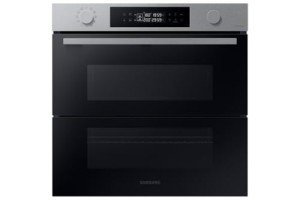The Comprehensive Guide to Built-in Electric Ovens and Hobs
In today's fast-paced world, modern kitchen appliances have actually developed considerably to deal with the tastes and requirements of modern house owners. Among these appliances, built-in electric ovens and hobs stand apart for their performance, design, and functionality. This short article explores the features, advantages, installation pointers, and upkeep of built-in electric ovens and hobs, alongside dealing with often asked concerns.
Understanding Built-in Electric Ovens
What Is a Built-in Electric Oven?
A built-in electric oven is an appliance created to be set up into a wall or kitchen cabinetry, providing a seamless, integrated appearance in the kitchen. Unlike freestanding ovens, built-in designs save area and typically come equipped with additional features such as self-cleaning cycles, convection cooking, and various cooking modes.
Types of Built-in Electric Ovens
- Single Ovens: Ideal for smaller sized kitchens or those who cook for less individuals.
- Double Ovens: Offer more cooking space, ideal for bigger families or those who captivate regularly.
- Mix Ovens: These include both a traditional oven and a microwave, providing flexible cooking alternatives.
Benefits of Built-in Electric Ovens
| Benefit | Description |
|---|---|
| Space-Saving Design | Fits flawlessly into cabinets, freeing up counter area. |
| Enhanced Aesthetics | Produces a contemporary, expert kitchen look. |
| Versatile Cooking Options | Frequently features multiple cooking modes consisting of bake, broil, and convection. |
| Energy Efficient | Takes in less energy than standard ovens. |
Understanding Built-in Hobs
What Is a Built-in Hob?
A built-in hob is a cooking surface set up into the kitchen counter top, integrating perfectly with the kitchen style. Readily available in electric, induction, and gas varieties, electric hobs are renowned for their accuracy and ease of use.
Types of Built-in Hobs
- Electric Hobs: Traditional coil components that heat via electrical resistance.
- Induction Hobs: Use magnetic energy to heat only the cookware, making them quicker and safer.
- Ceramic Hobs: Feature a smooth surface area with convected heat underneath, using simple cleansing.
Benefits of Built-in Hobs
| Advantage | Description |
|---|---|
| Quick Cooking Times | Electric hobs heat quickly, minimizing overall cooking time. |
| Easy to Clean | Flat surface area permits quick and uncomplicated cleaning. |
| Resilient | Typically built to last and hold up against high temperatures. |
| Versatile Compatibility | Functions well with various pots and pans materials. |
Installation Considerations
Installing a built-in electric oven and hob needs mindful planning.
Steps for Installation
- Measure the Space: Ensure the measurements of the oven and hob match the assigned space in your kitchen.
- Examine Electrical Requirements: Consult an electrical contractor to make sure circuitry can deal with the home appliance's power needs.
- Placement of Appliances: Position the oven at a hassle-free height, usually between waist and eye level.
- Ventilation: Ensure correct ventilation, specifically if your oven includes a range hood.
Important Tools
- Power drill
- Screwdrivers
- Level
- Determining tape
Safety Precautions
- Constantly detach the power before installation.
- Follow producer instructions carefully.
- Consider hiring a professional for electrical connections.
Maintenance Tips
Preserving built-in electric ovens and hobs is essential for longevity and efficiency.
Regular Care Routine
- Cleaning up the Surface: Use a soft cloth and manufacturer-recommended cleaner.
- Examining Electrical Connections: Check cords and plug for damages occasionally.
- Cleaning up Filters: If the oven has a ventilator, tidy or replace the filters as needed.
Repairing Common Issues
| Problem | Possible Solution |
|---|---|
| Oven Won't Heat | Examine the power supply and heating element. |
| Heating Inconsistency | Inspect the thermostat and oven calibration. |
| Hob Not Heating | Guarantee cookware is compatible and examine the power supply. |
Frequently Asked Questions
1. How do I pick the right size built-in electric oven?
Selecting the ideal size includes determining your kitchen area and thinking about how much cooking you usually do. If you amuse regularly or have a large family, select a double oven.
2. Are built-in electric hobs safe to use?
Yes, built-in electric hobs are safe, especially induction hobs which just heat up the pots and pans, decreasing the danger of burns.
3. Can I set up a built-in oven and hob myself?
While it is possible for knowledgeable DIY enthusiasts, hiring a professional is suggested, especially for the electrical connections.
4. How frequently should I clean my built-in oven and hob?
Cleaning up ought to be done frequently after use, with deep cleansing intervals depending upon cooking frequency - usually every few months.
5. Do built-in appliances require unique upkeep?
Built-in appliances need similar upkeep to freestanding models, however appropriate care needs to be taken with their surrounding cabinetry.
Built-in electric ovens and hobs provide a fusion of technology and style, using performance and contemporary visual appeals to any kitchen. With correct selection, cautious setup, and routine maintenance, these appliances can enhance one's cooking experience for numerous years. Understanding hob and built in oven package , benefits, and care requirements can empower homeowners to develop the kitchen of their dreams-- effectively and stylishly.
As kitchen areas continue to evolve into main hubs of the home, choosing the right built-in options plays a vital function in daily culinary creativity and enjoyment.

